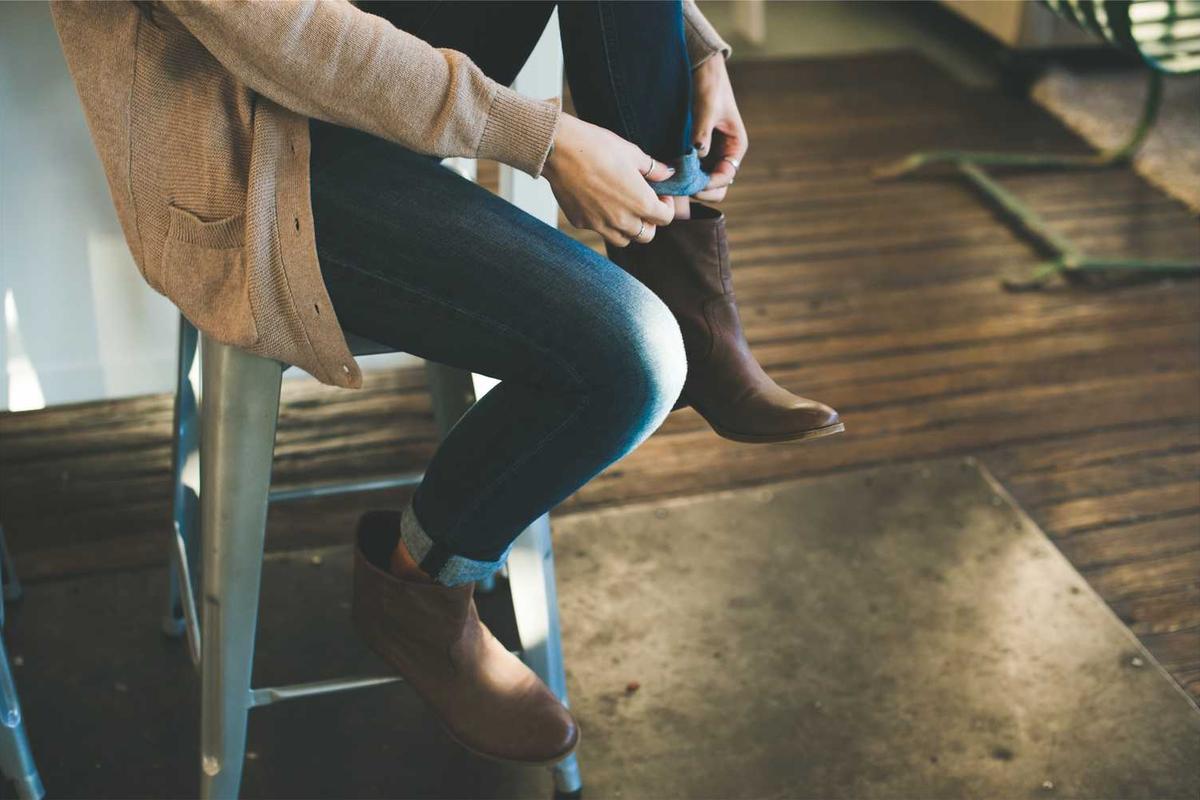Body Type and Flattering Fits: Complete Guide
Master the art of dressing for your unique body shape with expert guidance on silhouettes, proportions, and styling techniques that enhance your natural figure.

Understanding how to dress for your body type isn't about hiding or changing your shape—it's about celebrating your unique figure and creating silhouettes that make you feel confident and comfortable. This comprehensive guide provides practical styling strategies that work with your natural proportions to create balanced, flattering looks that reflect your personal style.
Understanding Body Types vs. Body Positivity
Before exploring specific body type guidelines, it's important to approach this topic with a healthy perspective that celebrates all body shapes while providing practical styling tools.
Body Positive Approach
- Celebration Focus: Emphasize your favorite features rather than hiding perceived flaws
- Personal Choice: Use guidelines as tools, not rules, based on your preferences
- Confidence Priority: The best fit is always what makes you feel confident
- Style Integration: Combine body-conscious choices with personal style preferences
- Evolution Acceptance: Recognize that bodies change and style adapts accordingly
The Science of Flattering Fit
- Visual Balance: Creating pleasing proportions through strategic styling
- Line and Shape: Using clothing lines to guide the eye
- Proportion Play: Balancing different areas of the body
- Fit Fundamentals: Ensuring proper fit regardless of body type
- Optical Illusions: Understanding how clothing can enhance your silhouette
Universal Fit Principles
Foundation of Great Fit
Regardless of body type, certain principles create flattering silhouettes for everyone:
Proper Undergarments
- Well-Fitted Bras: Creates the foundation for all upper body clothing
- Seamless Underwear: Prevents visible lines under fitted clothing
- Shapewear Options: Smooths and enhances when desired
- Correct Sizing: Regular fittings ensure optimal support
- Quality Investment: Good foundations last longer and perform better
Fit Over Size
- Size Flexibility: Be willing to size up or down for better fit
- Tailoring Value: Professional alterations can transform garments
- Comfort Priority: Clothes should move with your body
- Quality Indicators: Look for proper drape and line
- Brand Variation: Sizes vary significantly between brands
Body Type Categories and Styling
Pear/Triangle Body Type
Characteristics: Smaller bust and shoulders, defined waist, fuller hips and thighs
Styling Goals
- Balance Proportions: Add visual weight to the upper body
- Highlight Waist: Emphasize the smallest part of your torso
- Elongate Legs: Create length and streamline the lower body
- Shoulder Enhancement: Create broader shoulder lines
Flattering Strategies
- Tops: Boat necks, off-shoulder, horizontal stripes, light colors
- Bottoms: Dark colors, straight or bootcut jeans, A-line skirts
- Dresses: Fit-and-flare, wrap dresses, empire waist
- Outerwear: Structured blazers, cropped jackets
- Accessories: Statement necklaces, scarves, shoulder details
Apple/Round Body Type
Characteristics: Fuller midsection, broader shoulders, slimmer hips and legs
Styling Goals
- Create Waist Definition: Use strategic styling to define the waist
- Elongate Torso: Draw the eye vertically through the midsection
- Highlight Legs: Show off slimmer lower body
- Balance Proportions: Create flow from upper to lower body
Flattering Strategies
- Tops: V-necks, wrap styles, empire waist, flowing fabrics
- Bottoms: Fitted jeans, pencil skirts, bootcut pants
- Dresses: A-line, wrap dresses, shift dresses with belts
- Outerwear: Open cardigans, long blazers, waterfall jackets
- Accessories: Long necklaces, scarves, belts at natural waist
Hourglass Body Type
Characteristics: Balanced shoulders and hips, defined waist
Styling Goals
- Maintain Balance: Keep proportions between upper and lower body
- Emphasize Waist: Highlight your natural waistline
- Avoid Overwhelming: Choose styles that don't hide your shape
- Classic Elegance: Embrace fitted, tailored silhouettes
Flattering Strategies
- Tops: Fitted styles, wrap tops, scoop necks
- Bottoms: High-waisted styles, pencil skirts, straight-leg pants
- Dresses: Bodycon, wrap dresses, fit-and-flare
- Outerwear: Fitted blazers, belted coats, tailored jackets
- Accessories: Belts, fitted scarves, proportional jewelry
Rectangle/Straight Body Type
Characteristics: Balanced shoulders, waist, and hips with minimal waist definition
Styling Goals
- Create Curves: Add dimension and shape to the silhouette
- Define Waist: Use styling techniques to create waist definition
- Add Interest: Use textures, patterns, and layers
- Proportion Play: Experiment with different silhouettes
Flattering Strategies
- Tops: Peplum styles, ruffles, horizontal stripes, cropped tops
- Bottoms: Low-rise jeans, pleated skirts, wide-leg pants
- Dresses: Drop-waist, tiered dresses, belted styles
- Outerwear: Cropped jackets, textured blazers, layered looks
- Accessories: Wide belts, statement jewelry, scarves
Inverted Triangle Body Type
Characteristics: Broader shoulders and bust, narrower hips
Styling Goals
- Balance Proportions: Add visual weight to the lower body
- Soften Shoulders: Choose styles that don't emphasize shoulder width
- Enhance Hips: Create curves and interest in the lower body
- Elongate Torso: Create length through the midsection
Flattering Strategies
- Tops: V-necks, scoop necks, vertical details, darker colors
- Bottoms: Light colors, wide-leg pants, A-line skirts, patterns
- Dresses: A-line, fit-and-flare, bottom-heavy patterns
- Outerwear: Hip-length jackets, open cardigans
- Accessories: Hip belts, statement shoes, leg-elongating details
Advanced Fit Techniques
Creating Visual Balance
Use strategic styling to create pleasing proportions:
Color and Pattern Placement
- Light Colors: Draw attention and add visual weight
- Dark Colors: Minimize and streamline areas
- Patterns: Create focus and add dimension
- Vertical Lines: Elongate and slim the silhouette
- Horizontal Lines: Add width and curves
Proportion Techniques
- Rule of Thirds: Divide your silhouette into pleasing proportions
- High-Low Contrast: Balance fitted with loose pieces
- Layering Strategy: Add dimension without bulk
- Waist Placement: Adjust where you define your waist
- Hemline Harmony: Choose flattering lengths for legs
Specific Styling Challenges
Petite Styling
Maximize your frame with proportion-conscious choices:
- Monochromatic Dressing: Create unbroken lines for height
- High Waists: Elongate legs and define proportions
- Cropped Jackets: Maintain leg length in outerwear
- Vertical Details: Use stripes, seams, and buttons strategically
- Scale Awareness: Choose accessories proportional to your frame
Tall Styling
Embrace your height while creating balanced proportions:
- Color Blocking: Break up your silhouette with contrasting colors
- Horizontal Details: Add width with stripes and patterns
- Cropped Styles: Show some skin to break up length
- Layering Freedom: Experiment with longer layers
- Bold Accessories: Use statement pieces to add visual interest
Plus-Size Styling
Celebrate your curves with confident, flattering choices:
- Fit First: Prioritize proper fit over size numbers
- Waist Definition: Use belts and tailoring to create shape
- Quality Fabrics: Choose materials that drape well
- Strategic Support: Invest in good undergarments
- Confidence Styling: Wear what makes you feel amazing
Building a Body-Conscious Wardrobe
Essential Pieces by Body Type
Build a foundation wardrobe that flatters your specific shape:
Universal Essentials
- Well-Fitted Jeans: In a cut that flatters your body type
- Classic Blazer: Tailored to enhance your proportions
- Little Black Dress: In a silhouette that celebrates your shape
- Quality Basics: T-shirts and tanks in flattering cuts
- Statement Piece: One item that makes you feel incredible
Tailoring and Alterations
Maximize the potential of your wardrobe through professional alterations:
Common Alterations
- Hemming: Perfect length for pants, skirts, and dresses
- Waist Adjustments: Take in or let out for perfect fit
- Sleeve Length: Proper sleeve proportions for jackets and shirts
- Shoulder Adjustments: Limited but crucial for blazers
- Dart Adjustments: Improve fit through the bust and waist
Alteration Investment Guide
- High-Value Items: Suits, coats, and dresses worth the investment
- Basics: Perfect-fitting jeans and blazers
- Special Occasion: Formal wear for important events
- Quality Pieces: Items you'll wear frequently
- Professional Assessment: Consult with experienced tailors
Shopping Strategies
Trying On Techniques
Maximize fitting room efficiency with strategic approaches:
- Proper Undergarments: Wear appropriate bras and underwear
- Movement Test: Sit, walk, and raise your arms
- Multiple Sizes: Try different sizes to find the best fit
- Lighting Awareness: Consider how clothes look in different light
- Comfort Assessment: Ensure clothes feel as good as they look
Online Shopping for Fit
Navigate online purchases with body-conscious strategies:
- Measurement Knowledge: Know your exact measurements
- Size Chart Consultation: Always check brand-specific sizing
- Return Policy: Ensure easy returns for fit issues
- Review Analysis: Read fit-specific reviews from customers
- Virtual Try-On: Use technology when available
Confidence and Body Image
Developing Body Confidence
Build a positive relationship with your body and style:
- Focus on Function: Appreciate what your body can do
- Celebrate Uniqueness: Embrace what makes you distinctive
- Compliment Practice: Give yourself genuine style compliments
- Progress Recognition: Acknowledge improvements in how you feel
- Community Support: Surround yourself with body-positive influences
Style Evolution
Allow your style to grow with your body and life changes:
- Flexibility: Adapt guidelines to life changes
- Experimentation: Try new styles with confidence
- Personal Rules: Create your own guidelines based on experience
- Professional Help: Consider working with a stylist
- Ongoing Learning: Continue to refine your understanding
Conclusion
Dressing for your body type is ultimately about understanding how to use clothing as a tool to feel confident, comfortable, and authentically yourself. These guidelines provide a foundation, but your personal preferences, lifestyle, and individual taste should always take precedence in creating a wardrobe that truly serves you.
Remember that the best-dressed individuals are those who understand their bodies, embrace their unique characteristics, and use that knowledge to make choices that make them feel incredible. Use these principles as a starting point, but never let them limit your self-expression or style experimentation.


